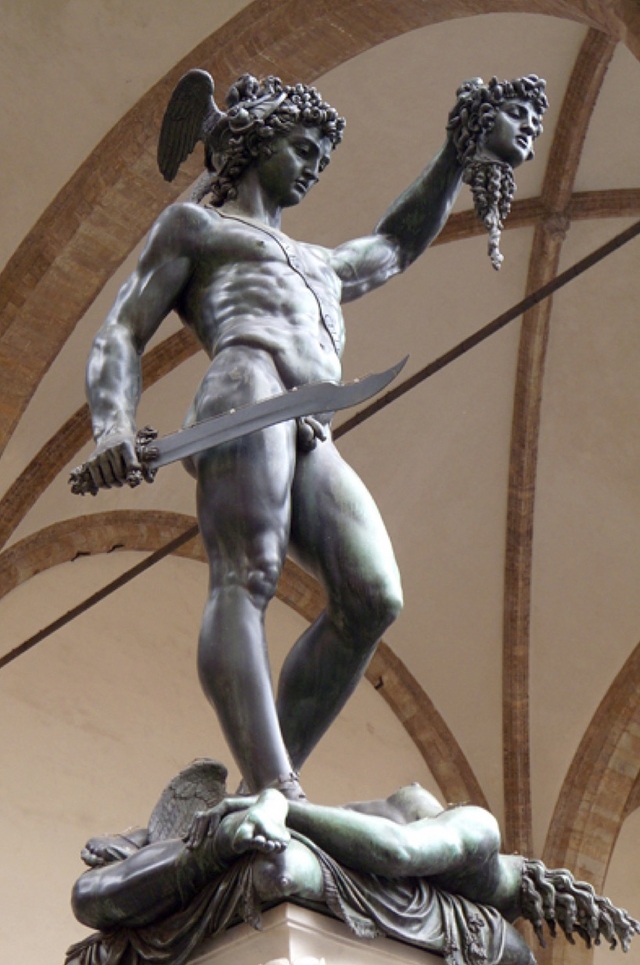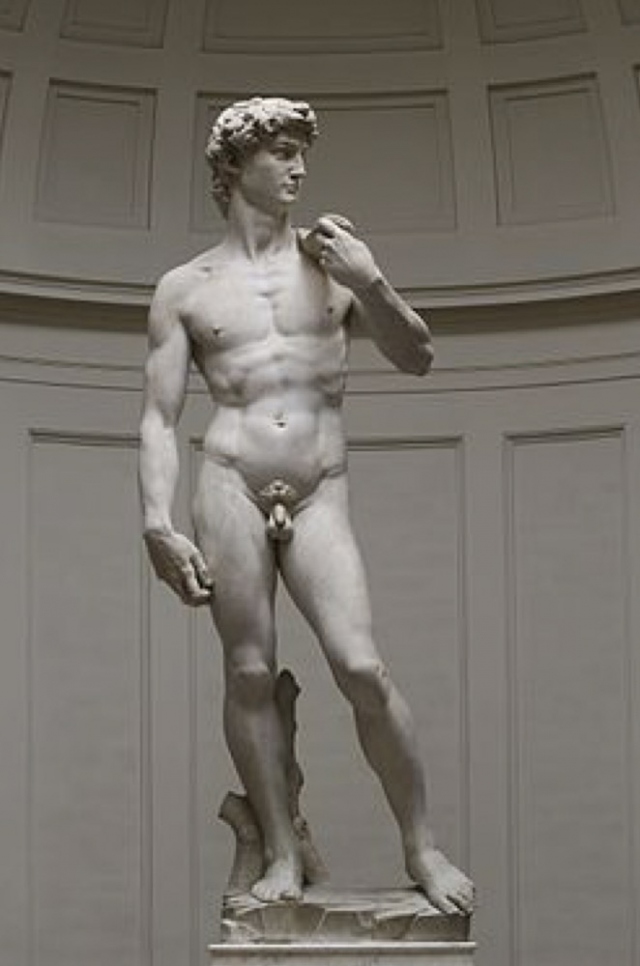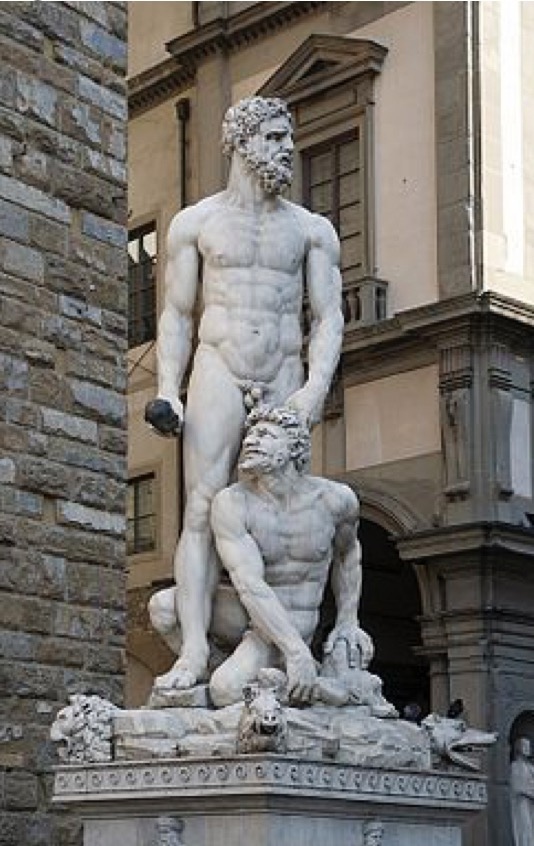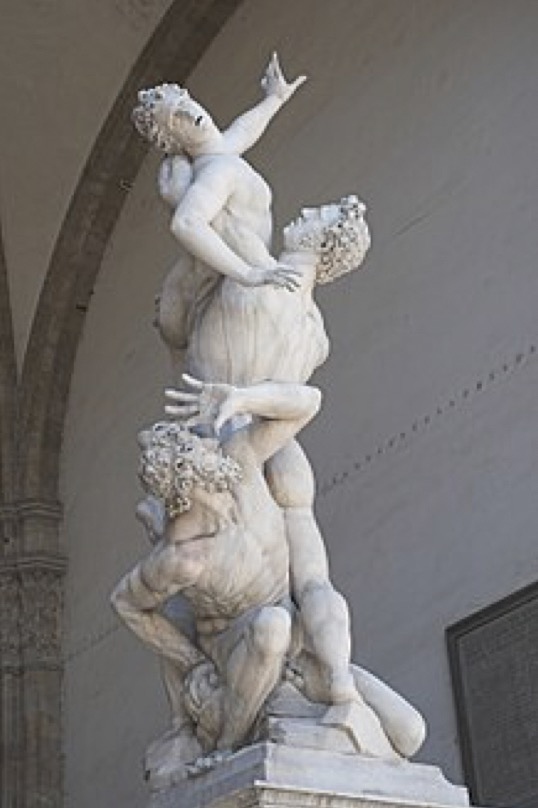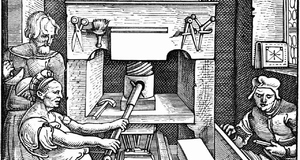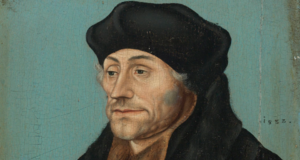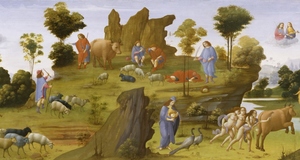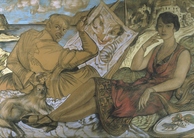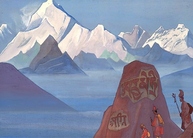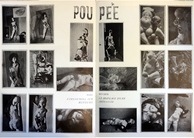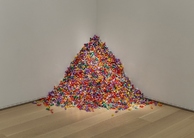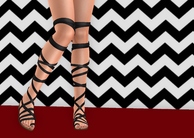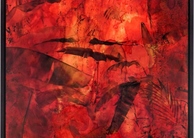Medusa's Blood: On the Ovidian Assertion of Fame in Cellini's Perseus
By
2021, Vol. 13 No. 11 | pg. 1/1 AbstractCast in one piece of bronze in 1554, Benvenuto Cellini'sPerseus with the Head of Medusa representeda monumental feat of artisticvirtuosity. Viewers marvelled at the imposing size of the bronze, the sense of liquid tactility in the blood pouring from either end of Medusa's neck, and—most importantly to Cellini himself—they marvelled at the artist's skill. Ostensibly meant to allude to the political mastery of Grand Duke Cosimo I de Medici, the sculpture's Ovidian iconographic program is demonstrably concerned with aggrandizing Cellini's generative power and asserting the artist's alignment with the creative genealogy of antiquity. Just as Ovid claims that the influence of the Metamorphoses will make him functionally immortal, so too Cellini's seeks to secure his artistic apotheosis through the mythographic manipulation of his Ovidian source. This preoccupation informed every facet of the sculptural program—its iconography, figuration, and ultimate presentation in the Piazza della Singoria. "Viviam." Thus, Ovid concludes his Metamorphoses: "wherever Rome's influence extends[...] I will be spoken[...] and, famous through all the ages, if there is truth in poet’s prophecies, I shall live on"(15.877-879).1 He certainly wasn't wrong. Ovid's prophetic self-apotheosis has been realized since his death in the preponderance of iconography pulled from his work—particularly in Renaissance Italy where classicism produced an exponential proliferation of the Metamorphoses. In Benvenuto Cellini's Perseus with the Head of Medusa (fig.1), unveiled in 1554, Ovid lives on not only through iconographical allusion, but also through the adoption of his self-fashioning drive to be immortalized in artistic fame. This classically informed aspiration towards artistic fame is traceable from Ovid, through Petrarch, and into the creative ideology which informs the Perseus with the Head of Medusa. Cellini's self-promotional intention in the Perseus statue is apparent in various ways, many of which become evident upon examination of the artist's bombastic autobiographical account of the work's conception, execution, and reception. Furthermore, the iconography itself is particularly conducive for the artist's assertion of artistic merit—an assertion which is actualized through the sculpture's historical, relational, and phenomenological agency. Cellini's Perseus with the Head of Medusa depicts the mythical king of Mycenae, son of Jove and Danae, who stands triumphantly after decapitating the gorgon Medusa. Perseus stands on top of Medusa's writhing body, with his weight on his right leg, and his left leg delicately bent at the knee. Medusa is contorted into a dehumanized circular mass, her left hand clutching at her right angle. The gorgon's body reads like an inanimate heap of limbs—the body of the dualistic being, divorced from its vital animus. Perseus's left foot rests triumphantly on the vanquished monster's stomach. In his left hand, he holds aloft the potent severed head; in his right, he firmly holds the instrument of decapitation, the curved blade, perpendicular to his nude torso. It is worth noting that Cellini renders the blade as curved—suggesting that the artist was paying close attention to—and faithfully rendering—his source, the Metemorphoses, in which Ovid briefly mentions a curved blade. The hero's face is downcast, stoic in victory. Medusa's mouth is slightly agape. Her eyes are almost closed, but not quite, suggesting that she is still in the process of dying—in the quintessentially Ovidian state of liminal metamorphosis, perpetual non finito (unfinished-ness).2 This is also suggested by the profusion of blood pouring from either end of the severed neck. It is as if Medusa is dripping vital energy, which is also necessarily generative energy in the mythographic logos of Perseus and Medusa. 3 Slung across the hero's otherwise nude torso is a band, bearing the artist's name in large Latinate lettering. In this presentation of the myth, Cellini is demonstrably concerned with self-aggrandizement, an inclination to which Ovid's poetic example lends apt rhetorical ammunition and justification—as Ovid's metamorphoses, being an epic of creations and transformations, was (and is) frequently interpreted as being about the act of poetic/artistic creation itself.4Firstly, however, it is necessary to establish the nature of the Perseus bronze's conception, how it was requested by Grand Duke of Tuscany Cosimo I de Medici, and how Cellini liberally interpreted the request in a way that would accentuate its self-promotional potential. Cosimo I originally requested a free-standing Perseus, yet Cellini advocated for the expansion of his subject to include the vanquished Medusa and three miniature bronzes: Perseus's father Jove in front, his mother Danae to the left, and his protector Pallas to the right, all of which would be placed in the niches of the altar-like plinth. Alison Wright notes that these figures can be seen literally and figuratively as the foundation of Perseus's triumph.5 Furthermore, the ambitious pedestal is replete with marble reliefs of monsters, hellish apparitions, and the rescuing of Andromeda. Through these dynamic elements, Cellini activates the narrative from which Perseus derives—a narrative which is suggestive of heroism, artistic power, and fame. Given what Jean Seznec described as a particularly Florentine inclination, to use Ovidian iconography to imbue art with some "momentous secret from the wisdom of the ancients"—we must also consider what Cellini means to evoke by the inclusion of such a torrent of Medusa's blood, beyond the sense of liquid tactility which would gesture toward his virtuosity.6 In the Ovidian source, the blood of Medusa, spilled by the blade of Perseus, generates Pegasus, who in turn later generates the Hippocrene, the muses' fount of poetic inspiration on Mount Helicon. The Pegasus itself may be interpreted as an allegory of fame, which Cellini synecdochally evokes through the gorgon's blood.7 Cellini thus seems to be trying to actualize the process of his work generating fame. Furthermore, Cellini's decision to emphasize Medusa's blood gestures toward the blood's symbolic significance as the ultimate etiology of artistic creation. As such, Cellini asserts his sculpture's power to influence and generate more work. This assertion is made possible through the hyperbolic craftsmanship of the blood which encourages us to consider the craftsman himself—as well as Perseus—as its generative agent. The way in which the gorgon's blood seems to threaten to spill beyond its artistic confine phenomenologically engages the viewer in a way which calls attention to its status as an art object, and subsequently to its status as a fabrication of Cellini's. The artist thus inserts himself into the narrative of the genealogy of artistic power. In other words, the artist affirms himself as canonical—for what else is the artistic canon if not the lineage of figures which retrospectively seem inevitably seminal. The artist's desire for his Perseus to grant him artistic fame, authority, and influence is repeatedly observable in his autobiographical account of the works conception. The intention comes through so strongly that it may be shown to fundamentally inform the works conception, composition, and presentation. Furthermore, this source definitively displays that Cellini's conception of artistic fame is derived from the example of the antiquity. Though the historical verity of Cellini's Vita is undoubtedly questionable (given its oppressively self-flattering narration)—from the artist's perceived, or desired truth we may at least infer something about his intentions; namely, that a primary aim of Cellini's Perseus was to cement its maker in an artistic lineage originating in antiquity, leading up to Michelangelo and the great artists of his time. In the midst of Cellini's account of the Perseus's creation, the artist recalls having a Greekmarble brought to him from the Grand Duke, Cosimo I. Cellini records himself as saying,
From this passage, we glean Cellini's veneration for the masters of antiquity, and how he fashions himself as their peer. He presents himself as being in collaboration with them and therefore participating in their fame. Furthermore, we can see that Cellini feels that he may connect with the classical sculptor through a shared iconography presented in Metamorphoses. By turning the "lad" into a Ganymede, Cellini asserts the timelessness of Ovid; he asserts that such iconography is trans-temporal, in perpetual non finito, bridging the gap between the ancients and himself, suspending all three—Ovid, the nameless ancient, and Cellini himself—in an immortal lineage of artists, carried on through a shared creative impetus. The artist subsequently illuminates his view of how he, his contemporaries, and his immediate predecessors fit into this trans-temporal fraternity of artistic fame. Firstly, he sets up his rival, and apparent nemesis, Bartolommeo Bandinelli in opposition to great art, then aligns himself and Michelangelo with the fame and prestige of antiquity. Cellini depicts Bandinelli disparaging the ancients, to which he responds, addressing the Grand Duke,
Thus, in the midst of Cellini's account of the Perseus's production he betrays his preoccupation with aligning himself with the preeminent figures of artistic fame. More specifically he asserts his affinity with Michelangelo and his superiority over his contemporary, Bandinelli. Michelangelo, Cellini, and the ancients are represented as recipients of fama buona; Bandinelli is the recipient of maledicenzia.[10] In the context of the Piazza della Signoria, Cellini encourages his readers to compare his Perseus with Michelangelo's 1504 David (fig. 2) and Bandinelli's 1534 Hercules and Cacus (fig. 3). As Cellini would have it, Perseus and David are a part of the lineage of artistic fame that began in antiquity, whereas Bandinelli does not respect the ancients and is therefore unworthy of such praise. It is furthermore worth nothing that Cellini describes tangible fame as being quantifiable in sonnets, a form raised to its station by Petrarch. The Renaissance notion of artistic fame can be seen as originating with the great humanist poet, who, in his Canzionere writes sonnet after sonnet in praise of his beloved Laura. Notable for the purposes of this argument, Petrarch recurrently puns Laura with the Laurel of Apollo—so much so that the work becomes evidently preoccupied with the pursuit of the artistic fame which the laurel symbolizes.11 In the above passage, we may observe Petrarch's influence on Cellini, not only in his encouragement of the veneration of the ancients, but also in his preoccupation with an artistic fame typified by an Ovidian symbol, the laurel. This laurel, in the figurations of both Ovid and Petrarch, is an immortalizing adornment. In his Trionfi della Fama, Petrarch writes, "Then as I gazed across the grassy vale/ I saw appearing on the other side/ Her who saves man from the tomb, and gives him life."12 As has already been noted, Ovid too asserts that his fame will immortalize him. In Cellini's account, Michelangelo's sculptures have taken the position of the beloved Laura, or rather the Laurel—thereby earning him immortalizing fame. Eventually, Cellini boasts about the number of sonnets posted on his own door upon the Perseus statue's unveiling, which further suggests the artist's preoccupation with an artistic fame based on the Petrarchan ideal. Fame (in the modern sense of the word), such as Ovid achieved, is Cellini's goal; the concept of fama buona, manifested by these sonnets is the dynamic process of generating this fame. Just as Medusa's blood is the analogue through which Pegasus, the allegory of fame, is actualized—the sonnet is the analogue through which Cellini and Michelangelo's fame is processed. However before proceeding on the significance of the sculpture's unveiling and reception, we must consider Cellini's figuration of the work’s fabrication—an account which must necessarily inform our understanding of the artist's compositional choices and effective intentions. Numerous scholars argue that Perseus with the Head of Medusa, was meant to symbolize and justify the absolutism of Grand Duke Cosimo I's power. Mary D. Gerard argues that Cellini's Perseus was simply part of an ongoing program to reincorporate aggressive masculinity into the rhetoric of Medici rule, after it briefly became symbolic of republicanism in Michelangelo's 1504 David.13 Given the Grand Duke's patronage, as well as the long established political significance of other statues in the Piazza della Signoria, Perseus as Cosimo I is certainly a convincing reading, one which Cosimo I himself likely encouraged, and many of his contemporaries recognized. This reading is furthermore supported by the fact that since the 15th century, the myths depicted in Florentine art and literature consistently contained allusions to the private lives of the Medici family—the locus of power around which humanist scholarship revolved.14 However, while Cellini ostensibly encouraged the comparison between his patron and his Perseus, the artist also demonstrably intended that he would be equated with Perseus. As such the statue's figurative program may be read primarily as an intended signification of the artist's own outstanding artistic virtu (a term which I use advisedly, differing from, but not unrelated to the English "virtue" or "virtuosity", deriving from the Latin "vir": man). Cellini is the hero of his narrative, conquering his medium through virtu, claiming and displaying his right to fame. Upon reading the artist's Vita, it becomes apparent that his Perseus is only figured as Cosimo insofar as it inevitably will and must be read as such in the context of its patronage and placement. To become a Perseus figure, Cellini participates in a mode of self-fashioning as "action hero" that scholar Maria Loh notes is typical of such masters of the renaissance.15 In Cellini's case, it is particularly revealing to consider his autobiographical account of the bronze's forging, and how it seeks to align the artist with the hero he depicts. Firstly, Cellini figures himself, like Perseus, being plagued by skeptics, doubters and jealous rivals. Just as Polydectes sends Perseus on a task that he believes will be fatal, so Cosimo I is (according to the Vita) doubtful that Cellini can succeed in the task requested of him. Cellini alleges that the Grand Duke says, "Benvenuto, this figure cannot succeed in bronze; the laws of art do not permit it"(II.LXXIII). A recurrent motif in the saga of Perseus is that people doubt his ability, his claims, or the reason for his fame; Polydectes calls the hero's story a false fable; Atlas says, "Be off: you boast/ of mighty deeds and say you're born of Jove—/all lies; and fables cannot help you now" (IV); Phineus too doubts the legitimacy of Perseus's claims, before finally repenting, admitting: "You [Perseus] are the bravest"(V). Cellini figures himself plagued by the same sort of doubts from Cosimo I, from Bandinelli, and from his own craftsman. Cellini writes, as Bandinelli:
His craftsmen too are said to have given up hope in the process of forging. The malediction of such doubters and disbelievers is insistently re-emphasized throughout the text—a motif, which I argue, must necessarily be read as an attempt by the artist to cast himself as a Perseus figure because of the motif's similar prevalence in the Ovidian source. This doubt, this maledicenzia, is figured as turning to fama buona by virtue of the artist's heroic action. Just as Perseus, unveils his petrifying weapon to prove his enemies wrong, so Cellini figures the success of his Perseus. Cellini writes "but I swear by God that I will sift it to the bottom, and before I die will leave such witness to the world of what I can do as shall make a score of mortals marvel"(II.LXXVI). Thus, the artist claims that his artistic power sets him above mortals, and that, like Perseus, he will petrify his doubters with awe. The condition of being plagued by doubt is however not the only way in which Cellini asserts his heroism. The artist impresses his heroic virtu furthermore by the fact that creating such a large bronze in a single cast was an unprecedented feat.17 The account of the forging itself reads like a mythographic melodrama, in which the artist is the hero. Cellini is supposedly on his deathbed, when upon hearing his craftsmen say that the casting cannot succeed, he leaps out of bead, burns furniture and whatever else is on hand to stoke the furnaces, throws pewter and cutlery into the failing mass of bronze, and revivifies the process. Looking for inspiration, the artist recalls saying, "O Christ, how with your immense virtu you resuscitated from the dead, and climbed gloriously to Heaven!" Therefore, the forging of Perseus with the Head of Medusa was supposedly a triumph of virtu, analogous to that displayed by Perseus, Ovid, and even—according to Cellini—Christ. This reference to Christ and his virtu being the force behind his apotheosis, once again illustrates how Cellini was preoccupied with his art's potential to grant him immortalizing fame. Seen from another perspective, Cellini's attempt to align himself with Christ, unmistakably recalls how Ovid aligns his apotheosis with that of Julius Caesar. On that note, we must further consider the masculinizing implications of the term virtu, how the Perseus with the Head of Medusa asserts this trait, and subsequently how this assertion engages with the public space of the Piazza della Signoria. The misogynist implications of the sculptural program and history of the Piazza della Signoria are well documented and established.18 Of these works, including Cellini's, Giambologna's 1582, Rape of the Sabine Women (fig. 4); Bandinelli's 1534 Hercules and Cacus; as well as Michelangelo's 1504 David—especially given their diatribe-esque rhetoric against Donatello's 1455 Judith and Holofernes— Margaret Carrol argues "each work plays upon the thematics of sexual prowess and disempowerment as a way of establishing the hero/ruler's virtu in facing down opposition."19 Carrol furthermore notes that virtu is a prominent factor in Machiavelli's work of political theory dedicated to the Medici, The Prince, suggesting that masculine sexual prowess was solidified as an instrument of Florence's rhetoric of political power. Yet, given Cellini's self-fashioning drive, his demonstrable resentment of Bandinelli, his identification with Perseus, and his veneration of Michelangelo, the sexual prowess displayed by the Perseus may also be read as an assertion of his own creative power, rather than the political power of his patron. Observation of Cellini's Vita, as well as the iconography of the work itself, suggests that associations of Perseus's hyper-masculine sexualization with Cosimo I are secondary to the association intended between Cellini and Perseus. Christine Corretti argues that Cellini was unable to identify with the triumphant sexual assurance of Perseus because of his bi-sexuality—noting that Cellini writes, "I don't have the fair winged youth's respected prize."20 However, this "prize" may be more aptly interpreted as fame, an ideal which Cellini covets for himself through the erection of its example. Through the accentuation of Perseus's virility, Cellini gestures towards his own generative power. Perseus with the Head of Medusa is paradoxically a statement about fertility—particularly, artistic fertility—rather than death. In this regard, it is firstly necessary to consider the unmistakably phallic implications of the hero's sword. Cellini fashions his hero holding his blade erect at the waist, at the exact height of his otherwise diminutive genitals. As such, it isn't difficult to read the analogy suggested by the blade's apparent function as an instrument of conquest over the female body. However, the suggestion of the procreative power of Perseus's action goes beyond just this crude analogy when we recall the implicit fertility of Medusa's blood as the seminal fluid from which springs Pegasus—fame—and, subsequently, the Hippocrene: the mythological source of all artistic creation. Cellini's alignment of himself with Perseus activates this implicit mythographic istoria in the context of the Piazza della Signoria, making Perseus with the Head of Medusa read as an assertion of the artist's primacy, or significance, within a perceived lineage of artistic greatness—a lineage supposedly excluding Bandinelli, but including Cellini and Michelangelo. The mythographic implications of the phenomenological relationship between Michelangelo's David and Cellini's Perseus, which were erected across from each other, are complex and somewhat paradoxical in this regard. Cellini's Perseus, figured as the etiology of artistic production, seemingly petrifying David into marble in situ, simultaneously claims a position of progenitor and primogeniture in relationship to Michelangelo's sculpture. Positioned across from each other, the works engage in a reciprocally self-negating dialogue; whereby, David seems to spring from the propulsive fertile blood of Medusa, then get petrified by Perseus's elevation of the severed head. Subsequently—or perhaps antecedently—we recognize the obvious influence of Michelangelo's freestanding heroic nude on Cellini's Perseus; we recognize David, or Michelangelo rather, as the progenitor in the relationship. Cellini seeks to assert the inevitability of his fame and his work's fertility by claiming primacy over his own influence: Michelangelo. The dialogue which Cellini imposes between the two works is necessarily self-flattering because it renders the lauded David (and therefore Michelangelo) implicitly subservient to the petrifying power of Perseus with the Head of Medusa. The intentionality of this power dynamic may be gleaned by considering that an analogous figuration exists in the Ovidian source, in which Perseus turns his rival Phineus into a marble statue. Furthermore, earlier in Ovid's narrative, Perseus warns the combative crowd around him, "if any here—by chance—are friends of mine, let them avert their eyes!" (V. 152). When Perseus turns Phineus into marble, "Phineus, too, tried to avert his eyes too late: his neck grew stiff..." (V. 154). Thus, I argue that, given his consistent attention to the minutiae of his source—demonstrable in details such as the curved blade—Cellini may have been trying to encourage viewers to align David with Phineus. The averted gaze of Michelangelo's sculpture, its opposition to Perseus in the Piazza, and its medium make the comparison almost inevitable for any reader of Ovid (which would be most of Cellini's learned audience). This oppositional intention is furthermore supported by the fact that prior to leaping to kill the dragon guarding Andromeda, Ovid figures the distance between the two combatants as being the same as the range of a Balearic sling. Thus, Cellini's Ovid reading audience may have made the connection that the mythical Perseus could jump the same distance that David's slingshot could throw—making the biblical hero seem further subservient and impotent when juxtaposed with Cellini's bronze across the Piazza. This connection however is only made possible through Cellini's decision to expand his subject to include the various aforementioned elements of the statue which activate its narrative implications. Therefore, Cellini's demonstrable preoccupation with asserting his place within a lineage of artistic greatness can be seen to fundamentally inform the Perseus with the Head of Medusa's iconography, figuration, and presentation. Furthermore, the ideology which informs the conception of the immortalizing power of artistic fame can be traced from Ovid, through Petrarch, and into Cellini's apparent drive for apotheosis through the virtu of his creative power. ReferencesBarolsky, Paul. "As in Ovid, so in Renaissance Art."Renaissance Quarterly51, no. 2 (1998): 451-74. Carroll, Margaret D. "The erotics of absolutism: Rubens and the mystification of sexual violence."Representations25 (1989): 3-30. Cole, Michael. "Cellini's blood."The Art Bulletin81, no. 2 (1999): 215-235. Corretti, Christine. "Cellini’s Perseus and Medusa: Configurations of the Body of State." PhD diss., Case Western Reserve University, 2011. Freccero, John. "The Fig Tree and the Laurel: Petrarch's Poetics."Diacritics5, no. 1 (1975): 34. Garrard, Mary D. "The Cloister and the Square: Gender Dynamics in Renaissance Florence."Early Modern Women11, no. 1 (2016): 5-43. Loh H. Maria.Still Lives: Death, Desire, and the Portrait of the Old Master. Princeton University Press, 2015. Ovid. Metamorphoses. Translated by Allen Mandelbaum. New York: Houghton Mifflin Harcourt, 1993. Petrarca, Francesco.The Triumphs of Petrarch. Translated by Ernest Hatch Wilkins. Chicago Ill: University of Chicago Press, 1962. Seznec, Jean. The Survival of the Pagan Gods. Translated by Barbara F. Sessions. Princeton: Princeton University Press, 1953. Virgil.The Aeneid. Translated by Robert Fitzgerald. New York: Random House, 1983. Wright, Alison. "‘… con uno inbasamento et ornamento alto’: The Rhetoric of the Pedestal c. 1430–1550."Art History34, no. 1 (2011): 8-53. Endnotes1.) Ovid, Metamorphoses, trans. Allen Mandelbaum (New York: Houghton Mifflin Harcourt, 1993), 549. 2.) Paul Barolsky, "As in Ovid, so in Renaissance Art,"Renaissance Quarterly51, no. 2 (1998): 451-74. 3.) Michael Cole, "Cellini's Blood,"The Art Bulletin81, no. 2 (1999): 215-235. 4.) Paul Barolsky, "As in Ovid, so in Renaissance Art,"Renaissance Quarterly51, no. 2 (1998): 451-74. 5.) Alison Wright, "‘… con uno inbasamento et ornamento alto’: The Rhetoric of the Pedestal c. 1430–1550,"Art History34, no. 1 (2011): 8-53. 6.) Jean Seznec, The Survival of the Pagan Gods. Trans. Barbara F. Sessions (Princeton: Princeton University Press, 1953). 7.) Michael Cole.,"Cellini's blood,"The Art Bulletin81, no. 2 (1999): 215-235. 8.) Benvenuto Cellini, Vita, trans. John Addington Symonds. (Hoboken, N.J.: NL Freebook Publisher). 9.) Cellini, Vita. 10.) It is important to note here that fama, though related, is not synonymous with the English "fame". Fama—of which Cellini is here demonstrably concerned—refers to that which is generally spoken of someone. An apt allegory of the concept comes from Virgil who depicts fama as a flying monster with a plethora of mouths 11.) John Freccero. "The Fig Tree and the Laurel: Petrarch's Poetics,"Diacritics5, no. 1 (1975): 34. 12.) Francesco Petrarca.The Triumphs of Petrarch. Translated by Ernest Hatch Wilkins. Chicago Ill: University of Chicago Press, 1962. 13.) Mary D Gerard, "The Cloister and the Square: Gender Dynamics in Renaissance Florence,"Early Modern Women 11, no. 1 (2016): 5-43. 14.) Jean Seznec, The Survival of the Pagan Gods, 84-121. 15.) Maria H Loh.Still Lives: Death, Desire, and the Portrait of the Old Master. Princeton University Press, 2015: 137. 16.) Cellini, Vita. 17.) Cole, "Cellini's Blood,"215-235. 18.) Garrard, Mary D. "The Cloister and the Square: Gender Dynamics in Renaissance Florence."Early Modern Women11, no. 1 (2016): 5-44. 19.) Caroll, "The erotics of absolutism,” 3-30. 20.) Christine Corretti. "Cellini’s Perseus and Medusa: Configurations of the Body of State." PhD diss., Case Western Reserve University, 2011. AppendixFigure 1.
Benvenuto Cellini, Perseus with the Head of Medusa,1554. Piazza della Signoria, Florence. Figure 2.
Michelangelo Buonarroti,David,1504. Galleria dell'Academia, Florence. Figure 3.
Baccio Bandinelli,Hercules and Cacus, 1534. Piazza della Signoria, Florence. Figure 4.
Giambologna'sRape of the Sabine Women,1582. Piazza della Signoria, Florence. Suggested Reading from Inquiries Journal
Inquiries Journal provides undergraduate and graduate students around the world a platform for the wide dissemination of academic work over a range of core disciplines. Representing the work of students from hundreds of institutions around the globe, Inquiries Journal's large database of academic articles is completely free. Learn more | Blog | Submit Latest in Visual Arts |

